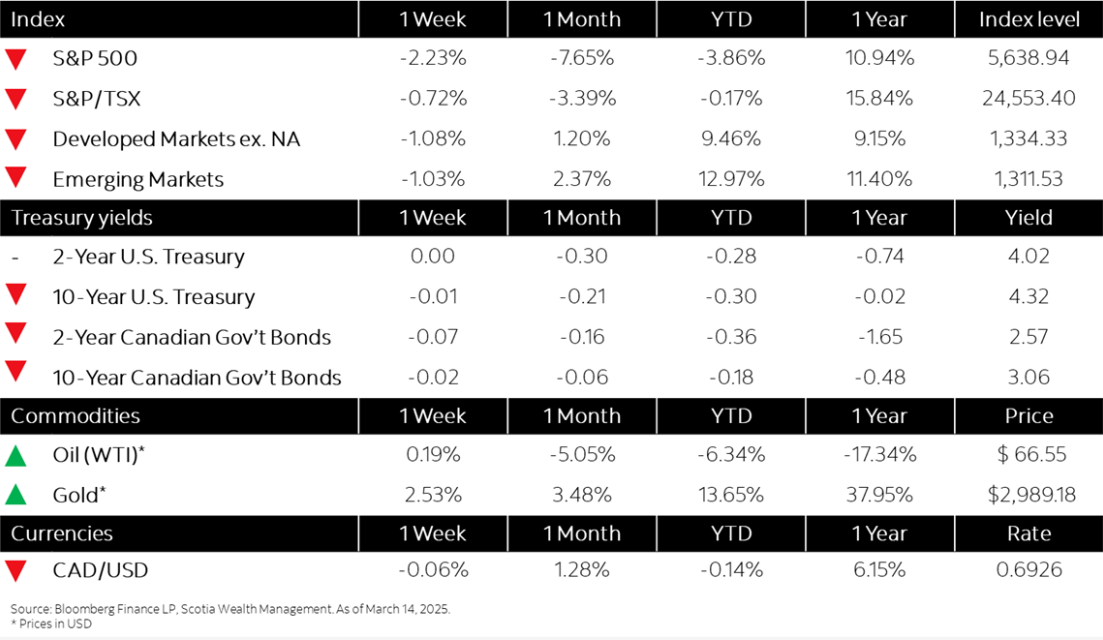
Market Watch: March 14
This week’s highlights
- North American markets continue to recede amid trade turmoil
- Bonds benefit from safe haven flows
- Bank of Canada cuts key rate to 2.75% as trade war rattles economy
- U.S. inflation hit 2.8% in February, less than expected
- German industrial production rose at start of 2025
Week in Review
North American markets continue to recede amid trade turmoil



